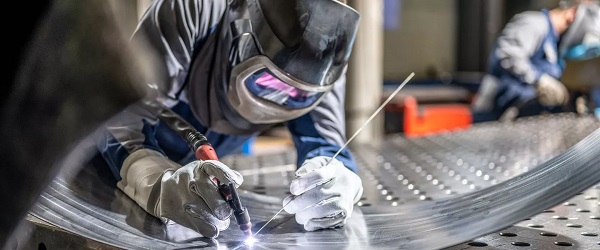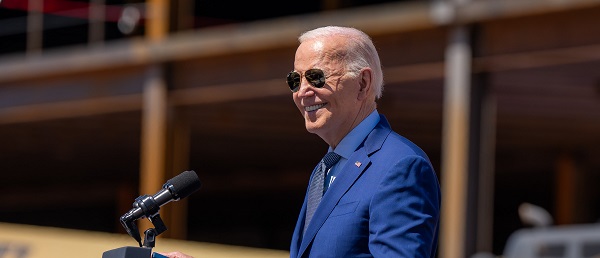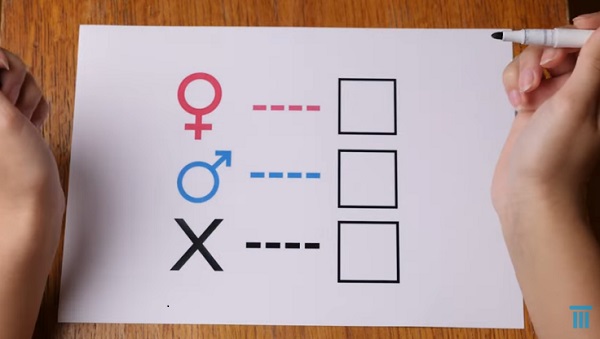Business
Tariff-driven increase of U.S. manufacturing investment would face dearth of workers

From the Fraser Institute
Since 2015, the number of American manufacturing jobs has actually risen modestly. However, as a share of total U.S. employment, manufacturing has dropped from 30 per cent in the 1970s to around 8 per cent in 2024.
Donald Trump has long been convinced that the United States must revitalize its manufacturing sector, having—unwisely, in his view—allowed other countries to sell all manner of foreign-produced manufactured goods in the giant American market. As president, he’s moved quickly to shift the U.S. away from its previous embrace of liberal trade and open markets as cornerstones of its approach to international economic policy —wielding tariffs as his key policy instrument. Since taking office barely two months ago, President Trump has implemented a series of tariff hikes aimed at China and foreign producers of steel and aluminum—important categories of traded manufactured goods—and threatened to impose steep tariffs on most U.S. imports from Canada, Mexico and the European Union. In addition, he’s pledged to levy separate tariffs on imports of automobiles, semi-conductors, lumber, and pharmaceuticals, among other manufactured goods.
In the third week of March, the White House issued a flurry of news releases touting the administration’s commitment to “position the U.S. as a global superpower in manufacturing” and listing substantial new investments planned by multinational enterprises involved in manufacturing. Some of these appear to contemplate relocating manufacturing production in other jurisdictions to the U.S., while others promise new “greenfield” investments in a variety of manufacturing industries.
President Trump’s intense focus on manufacturing is shared by a large slice of America’s political class, spanning both of the main political parties. Yet American manufacturing has hardly withered away in the last few decades. The value of U.S. manufacturing “output” has continued to climb, reaching almost $3 trillion last year (equal to 10 per cent of total GDP). The U.S. still accounts for 15 per cent of global manufacturing production, measured in value-added terms. In fact, among the 10 largest manufacturing countries, it ranks second in manufacturing value-added on a per-capita basis. True, China has become the world’s biggest manufacturing country, representing about 30 per cent of global output. And the heavy reliance of Western economies on China in some segments of manufacturing does give rise to legitimate national security concerns. But the bulk of international trade in manufactured products does not involve goods or technologies that are particularly critical to national security, even if President Trump claims otherwise. Moreover, in the case of the U.S., a majority of two-way trade in manufacturing still takes place with other advanced Western economies (and Mexico).
In the U.S. political arena, much of the debate over manufacturing centres on jobs. And there’s no doubt that employment in the sector has fallen markedly over time, particularly from the early 1990s to the mid-2010s (see table below). Since 2015, the number of American manufacturing jobs has actually risen modestly. However, as a share of total U.S. employment, manufacturing has dropped from 30 per cent in the 1970s to around 8 per cent in 2024.
| U.S. Manufacturing Employment, Select Years (000)* | |
|---|---|
| 1990 | 17,395 |
| 2005 | 14,189 |
| 2010 | 14,444 |
| 2015 | 12,333 |
| 2022 | 12,889 |
| 2024 | 12,760 |
| *December for each year shown. Source: U.S. Bureau of Labor Statistics | |
Economists who have studied the trend conclude that the main factors behind the decline of manufacturing employment include continuous automation, significant gains in productivity across much of the sector, and shifts in aggregate demand and consumption away from goods and toward services. Trade policy has also played a part, notably China’s entry into the World Trade Organization (WTO) in 2001 and the subsequent dramatic expansion of its role in global manufacturing supply chains.
Contrary to what President Trump suggests, manufacturing’s shrinking place in the overall economy is not a uniquely American phenomenon. As Harvard economist Robert Lawrence recently observed “the employment share of manufacturing is declining in mature economies regardless of their overall industrial policy approaches. The trend is apparent both in economies that have adopted free-market policies… and in those with interventionist policies… All of the evidence points to deep and powerful forces that drive the long-term decline in manufacturing’s share of jobs and GDP as countries become richer.”
This brings us back to the president’s seeming determination to rapidly ramp up manufacturing investment and production as a core element of his “America First” program. An important issue overlooked by the administration is where to find the workers to staff a resurgent U.S. manufacturing sector. For while manufacturing has become a notably “capital-intensive” part of the U.S. economy, workers are still needed. And today, it’s hard to see where they will be found. This is especially true given the Trump administration’s well-advertised skepticism about the benefits of immigration.
According to the U.S. Bureau of Labor Statistics, the current unemployment rate across America’s manufacturing industries collectively stands at a record low 2.9 per cent, well below the economy-wide rate of 4.5 per cent. In a recent survey by the National Association of Manufacturers, almost 70 per cent of American manufacturers cited the inability to attract and retain qualified employees as the number one barrier to business growth. A cursory look at the leading industry trade journals confirms that skill and talent shortages remain persistent in many parts of U.S. manufacturing—and that shortages are destined to get worse amid the expected significant jump in manufacturing investment being sought by the Trump administration.
As often seems to be the case with Trump’s stated policy objectives, the math surrounding his manufacturing agenda doesn’t add up. Manufacturing in America is in far better shape than the president acknowledges. And a tariff-driven avalanche of manufacturing investment—should one occur—will soon find the sector reeling from an unprecedented human resource crisis.
Jock Finlayson
Senior Fellow, Fraser Institut
Business
Biden’s Greenhouse Gas ‘Greendoggle’ Slush Fund Is Unraveling


From the Daily Caller News Foundation
By Michael Chamberlain
We warned you: this gas didn’t smell right from the beginning.
The Greendoggle has made the big time! Not every shady government giveaway to special interests gets its own Wall Street Journal editorial.
But how often does the new EPA administrator announce that his staff has discovered that $20 billion that had been appropriated for the Greenhouse Gas Reduction Fund (GGRF or “Greendoggle”) had been “parked” in a bank by the Biden EPA until it could be ladled out as grants to climate industry cronies? That’s what Administrator Lee Zeldin announced back in February, referencing a Biden appointee who was infamously caught on tape explaining that the agency was “throwing gold bars off the Titanic” – trying to get the unspent money out of the reach of the Trump administration. Zeldin’s “clawing back” that money, and the lawsuit by “public-private investment fund” Climate United to get the $7 billion it was awarded, has got the media paying attention. Finally.
Administrator Zeldin’s announcement that EPA is taking back the $2 billion awarded to an organization tied to prominent political figures marks another auspicious turn in the GGRF saga, which Protect the Public’s Trust (PPT) has followed and warned about since the beginning. Passed as part of the Inflation Reduction Act (Mr. Orwell, please call your office …), the GGRF was a massive spending program that would provide funds to environmentalist groups to finance green technology projects. The sheer amount of money Congress shoveled at the EPA was unprecedented. Unfortunately, it didn’t come with commensurate oversight resources – Mr. Zeldin says this was by design. The result was the Greendoggle, an environmentalist slush fund administered by insiders for insiders.
According to emails PPT obtained via FOIA request, the EPA invited a group of green activist organizations and thinktanks to a highly irregular November 2022 meeting to “provide early feedback on the RFI and ask clarifying questions.” And, as PPT foresaw, several groups with ties to EPA officials are on the invitation list. EPA’s “revolving door” with radical environmental groups spun fast in the Biden years.
PPT dug in and researched the green banks, finding multiple insider connections to the Biden administration. “With $27 billion dollars sloshing around, the American public should be on high alert for waste, fraud and abuse,” we warned in October 2023.
The next month, when the “short list” of coalitions vying to become GGRF distributors was announced, the Daily Caller News Foundation’s Nick Pope, whose reporting on the GGRF since early on has been essential in exposing the Greendoggle, revealed it featured “several organizations with considerable connections to the Biden administration, as well as the Democratic Party and its allies.” To put it mildly.
As the Greendoggle came together, the legacy media remained incurious, but for anyone paying attention, it smelled bad. There seemed to be no accountability, and given the Biden EPA’s ethical track record, that was concerning, to say the least.
One of the eight entities eventually chosen was the Coalition for Green Capital (CGC), a green bank whose mission is to “accelerate the deployment of clean energy technology throughout the US while maintaining a targeted focus on underserved markets.” CGC board member David Hayes left the organization for nearly two years to join the Biden White House Climate Policy Office as a special assistant to the president. He then went back to the CGC board. As PPT put it in a complaint it filed in June 2024 with the U.S. Office of Government Ethics and the EPA’s inspector general (and which the Zeldin EPA cited in its legal defense of the clawback), while at the White House Hayes “presumably worked at the highest level on the very GGRF program from which CGC sought funding upon his return. This timing is suspect considering CGC itself publicly announced his return to its board as part of its effort to obtain GGRF funding.” Not very subtle, but it worked. CGC got a $5 billion windfall out of the Greendoggle.
It just so happened that, while Mr. Hayes was in the administration, so was another CGC veteran, Jahi Wise. Like Hayes, Wise was a special climate assistant to the president, until he joined the EPA in December 2022 as … founding director of GGRF. Subtlety doesn’t seem to be among the skill sets CGC looks for in its people. Wise at least didn’t return to CGC after that. He joined a George Soros foundation.
The GGRF should become a metaphor for congressional shortsightedness, bureaucratic arrogance and the venality of special interests at the government trough. The “green” industry is an industry like any other, green special interests are special interests and the color of a taxpayer dollar doesn’t change because it’s being wasted in a nominally noble cause.
The Greendoggle stank, gas and all.
Michael Chamberlain is Director of Protect the Public’s Trust.
2025 Federal Election
Poilievre, Conservatives receive election endorsement from large Canadian trade union

From LifeSiteNews
The International Brotherhood of Boilermakers said Conservative prime minister candidate Pierre Poilievre ‘understands that the surest and most sustainable route to providing a cleaner environment is through technology, not dismantling our energy sectors, raising taxes, importing energy from other nations, and shipping Canadian jobs abroad.’
Conservative Party of Canada (CPC) leader Pierre Poilievre gained the support of one of Canada’s largest trade unions to become the nation’s next Prime Minister in what is an unprecedented show of favor to the conservatives.
An open letter statement published March 24 by the Arnie Stadnick, the International Brotherhood of Boilermakers’ vice president, stated that it is in its “interest” to announce its “endorsement for Pierre Poilievre and all the conservative candidates across Canada in this federal election.”
“Pierre gets it. He knows and understands that the surest and most sustainable route to providing a cleaner environment is through technology, not dismantling our energy sectors, raising taxes, importing energy from other nations, and shipping Canadian jobs abroad,” Stadnick wrote.
The Boilermakers, who represent about 12,000 skilled trades workers in many industries such as shipbuilding, manufacturing, and energy, said it supports Poilievre’s “Boots not Suits” policy that looks to expand training for tradespeople in the nation and increase grants.
“This plan is designed to strengthen the workforce and reduce reliance on foreign labour, adding 350,000 Canadian workers to job sites over five years,” the Boilermakers’ union noted.
“We believe that Pierre Poilievre is the man best equipped to support all of us in the work that we do.”
The Coalition of Concerned Manufacturers and Businesses of Canada also endorsed the Conservative leader with a statement last week, saying it “strongly supports the election of Pierre Poilievre as the next Prime Minister of Canada.”
Canada will hold its next federal election on April 28 after Prime Minister Mark Carney, who took over from Justin Trudeau a few weeks ago, triggered it a week ago.
Poilievre has blasted Carney as an “establishment” Liberal politician who was “installed” by “Justin Trudeau’s insiders.”
Carney thus far appears to not have gained the favor of Canada’s trade workers, as could be seen from a recent incident involving a Canadian construction worker. A video of this worker went viral online after the worker “vowed” not to “shake the hand” of Carney at a recent press conference in Alberta.
-

 Uncategorized1 day ago
Uncategorized1 day agoPoilievre on 2025 Election Interference – Carney sill hasn’t fired Liberal MP in Chinese election interference scandal
-

 Business2 days ago
Business2 days agoCuba has lost 24% of it’s population to emigration in the last 4 years
-

 2025 Federal Election22 hours ago
2025 Federal Election22 hours agoChinese Election Interference – NDP reaction to bounty on Conservative candidate
-

 2025 Federal Election2 days ago
2025 Federal Election2 days ago2025 Election Interference – CCP Bounty on Conservative Candidate – Carney Says Nothing
-

 2025 Federal Election12 hours ago
2025 Federal Election12 hours agoChina Election Interference – Parties Received Security Briefing Days Ago as SITE Monitors Threats to Conservative Candidate Joe Tay
-

 2025 Federal Election2 days ago
2025 Federal Election2 days ago2025 Federal Election Interference from China! Carney Pressed to Remove Liberal MP Over CCP Bounty Remark
-

 2025 Federal Election16 hours ago
2025 Federal Election16 hours agoHong Kong-Canadian Groups Demand PM Carney Drop Liberal Candidate Over “Bounty” Remark Supporting CCP Repression
-

 Aristotle Foundation2 days ago
Aristotle Foundation2 days agoCanada has the world’s MOST relaxed gender policy for minors






